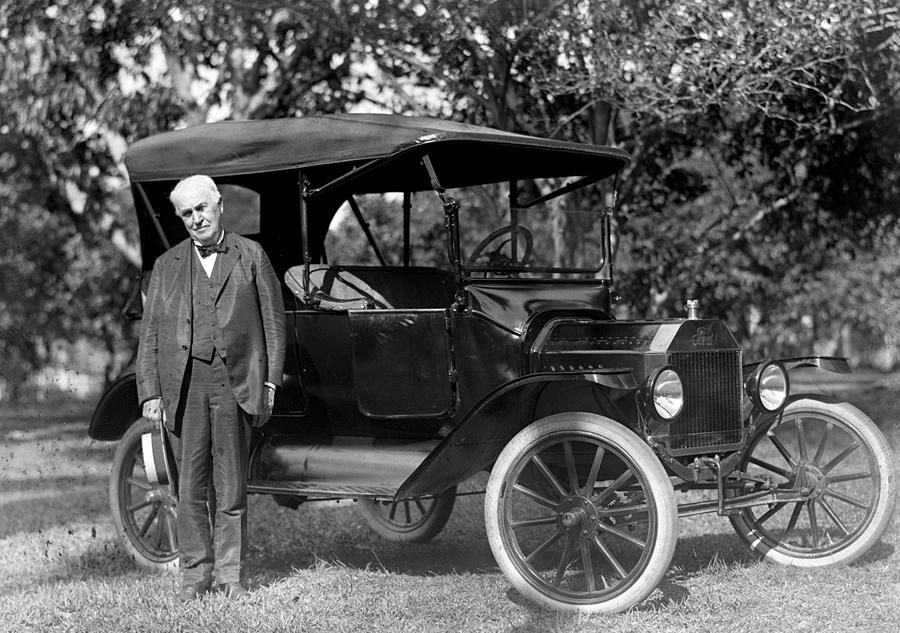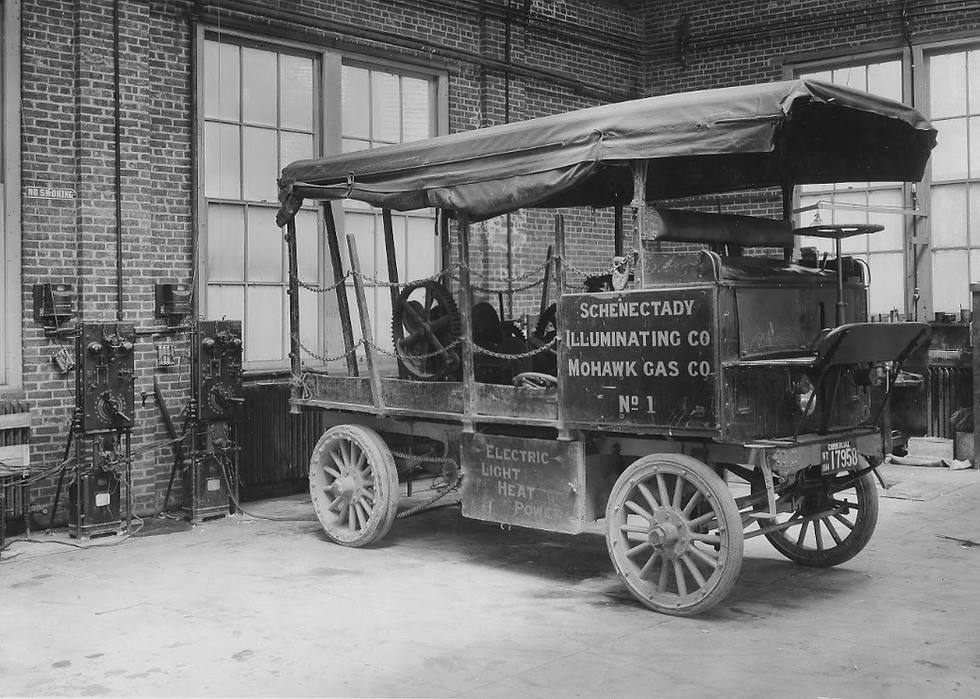Take me back to the future with your electric car!
- Margareth
- Jul 10, 2022
- 6 min read
Updated: Feb 27, 2023
The electric car is nothing new. History reminds us that the first motor vehicles produced were not those powered by oil, they were totally electric.

The urge of a sustainable alternative to traditional fuel cars (or explosion cars as they were called back in the days) to decrease the level of carbon dioxide emissions in the next 10 years led to an increase on sales of electric vehicles through 2021 and have remained strong so far in 2022. The number of electric cars on the world’s roads by the end of 2021 was about 16.5 million, triple the amount in 2018. This is good news for sure but few people know that in the early 1900s, in the United States, 38% of vehicles on the road were electric and that all the taxis in New York at the time were battery-powered. Does this surprise you? Did you think electric cars are something new? So, while electronic vehicles are the future of driving, their origins are solidly rooted in the past.
The first prototypes of electric coaches with experimental engines date back to the beginning 1850s, about thirty years earlier than the first petrol cars built in 1886 by Daimler & Benz.
What is likely the first human-carrying electric vehicle with its own power source was tested along a Paris street in April 1881 by French inventor Gustave Trouvé who also invented a forerunner to the LED light, the endoscope, wearable technology, the modern dental drill, electric razor and light therapy for skin complaints ... and improved the telephone. Impressive.

English inventor Thomas Parker built the first production electric car in Wolverhampton in 1884. France and the United Kingdom were the first nations to support the widespread development of electric vehicles. German engineer Andreas Flocken built the first real electric car in 1888, the Flocken Elektrowagen.




Electric automobiles set many speed and distance records among the most notable of these records was the breaking of the 100 km/h (62 mph) speed barrier, by Camille Jenatzy on 29 April 1899 in his ‘rocket-shaped’ vehicle Jamais Contente, which reached a top speed of 105.88 km/h (65.79 mph).


Surprisingly, Ferdinand Porsche started the Porsche brand during this period with an electric car. In 1898, he created the Egger-Lohner C.2 Phaeton, a vehicle that was powered by hub-mounted motors that drove the wheels.

Battery-powered electric vehicles during the early 1900s outperformed combustion vehicles. The most common reason was that electric vehicles produced less noise than internal combustion engine cars.
The Elektrische Viktoria was an electric car built in several versions by Siemens between 1905 and 1909 in Berlin. The versions comprised a four-seat convertible (advertised and used as a hotel taxi), a minibus with a box-like structure (much like a pickup), and a van.

Not only electric cars existed well over 110 years ago but also hybrid models did already exist in the early 1900s. Those cars integrated a traditional engine that recharged the batteries for electric traction, exactly as they do it today.
"Semper Vivus", a car with a fuel engine powering a generator which in turn produced electricity for the propellers connected to the wheels, was created by by Ferdinand Porsche in early 1900s who launched the first four-wheel drive electric car at the Paris World Exhibition in 1900. This is considered the first hybrid vehicle oft he history.



Between 1900 and 1905 Porsche managed to sell only 11 hybrid cars. The selling price of the Lohner-Porsche "Mixte", which was a commercial evolution of Semper Vivus models, was between 14,400 and 34,028 crowns depending on the bodywork and equipment, double the price of cars with a combustion engine.

In Italy two companies began to produce hybrid models. Officine Stigler in the city of Milan and the "Turin electric car company" which in the summer of 1907 presented tot he public its Landaulette, a luxury convertible car under license from the French Kriéger (the heat engine powered the batteries, like the Porsche).

While innovators in Europe had been working on battery-powered vehicles since the 1830s, the first successful electric car in the U.S. made its debut in 1890 thanks to Oliver Parker Fritchle, an American chemist, storage battery innovator, and entrepreneur with electric vehicle and wind power generation businesses. His six-passenger was basically an electrified wagon that hit a top speed of 14 mph. His initial battery patent was awarded in 1903[1] and by 1904 he had established what was to become the Fritchle Automobile & Battery Company in Denver, Colorado.[






Fritchle made one of the best car batteries in the business, which he claimed could travel 100 miles on a single charge.

Detroit Electric was making 13,000 electric cars annually by 1912. This was a production record for this time, and it was clear that Detroit Electric was a frontrunner in the industry.



Baker Electric Motor Vehicle Company set a record in 1910 by driving the farthest distance on a single charge. The trip was just over 200 miles, and the Victoria traveled at a speed of 12 miles per hour.





Today, one of these cars is owned by Mr. Jay Leno who takes us for spin in his 1909 Baker Electric.
While Edison batteries were largely used on most of the electric vehicles, Thomas Edison did create his own working electric vehicle in 1912. He once said that electricity was the future since "all the oil would be pumped out of the ground".
"I believe that ultimately the electric motor will be universally used for trucking in all large cities, and that the electric automobile will be the family carriage of the future."
- Thomas Edison

"Within a year, I hope, we shall begin the manufacture of an electric automobile."
- Henry Ford in 1914, writing to a friend


Henry Ford and Thomas Edison, two of America's greatest innovators, tried building one low-price electric car. Ford's first electric car - the so-called Edison-Ford - was built in 1914 by Henry Ford and Thomas Edison, who were not just colleagues but also good friends. The two friends tested various prototypes and the news of the creation of the Edison-Ford vehicle soon spread in newspapers all over the world, even before the official announcement by the Ford Motor Company was made.
Despite the initial enthusiasm, after some time nothing more was known, just when everything began to take off, the news stopped and no more news came out about the car. Various gossip circulated about the hypothetical end: there were those who attributed the disappearance of the car to a fire in Edison's workshop, others to conflicting ideas about batteries. Many speculated that the oil cartels had something to do with it.
Anyway, from that moment the project was stopped and the car was never launched.

General Electric involvement in electric cars dates to the 1890s, beginning with the Thomson Electric Wagonette Automobile. The 3 horsepower, 75 volt, 30 ampere battery-supplied motor propelled the vehicle to a top speed of 18 miles per hour.







"Electric cars are women's cars" and how GE road the wave of this trend
Electric vehicles had a number of advantages over their early-1900s competitors. They did not have the vibration, smell, and noise associated with gasoline cars. They also did not require gear changes. The cars were also preferred because they did not require a manual effort to start, as did gasoline cars which featured a hand crank to start the engine. That’s why they were often marketed as suitable vehicles for women drivers due to their ease of operation; in fact, early electric cars were stigmatised by the perception that they were “women’s cars”. Look at this marketing campaign made by the General Electric Company between 1910 and 1912.









GE electric cars charging stations



In the early 1900s, charging stations were added to home garages, garages for businesses, and public parking garages.















Despite the early excitement, electric cars sales drop when the legendary Ford T was launched on the US market.

However, this was not the only reason fort he decline of the EV. Prices of fossil fuels were highly competitive. In addition, for electric cars, there was the great problem of recharging, which still needed further development, as well as the autonomy albeit considerable for the time: 80-120 km. Furthermore, electric cars had a much lower speed than fuel ones: in the USA they managed to race at a maximum of 32 km / h.
Easier to refuel and competitively priced, the Ford Model T was a huge success and it ultimately spelt the end of the electric car’s popularity. The Ford Model T was such a runaway success that Henry Ford had sold 15million by 1927, just 19 years after its release.
The performance and comfort of fuel-powered vehicles quickly rose to a level that electric vehicles fell in the ranking of then-buyers' preferences to a niche choice.






Comments